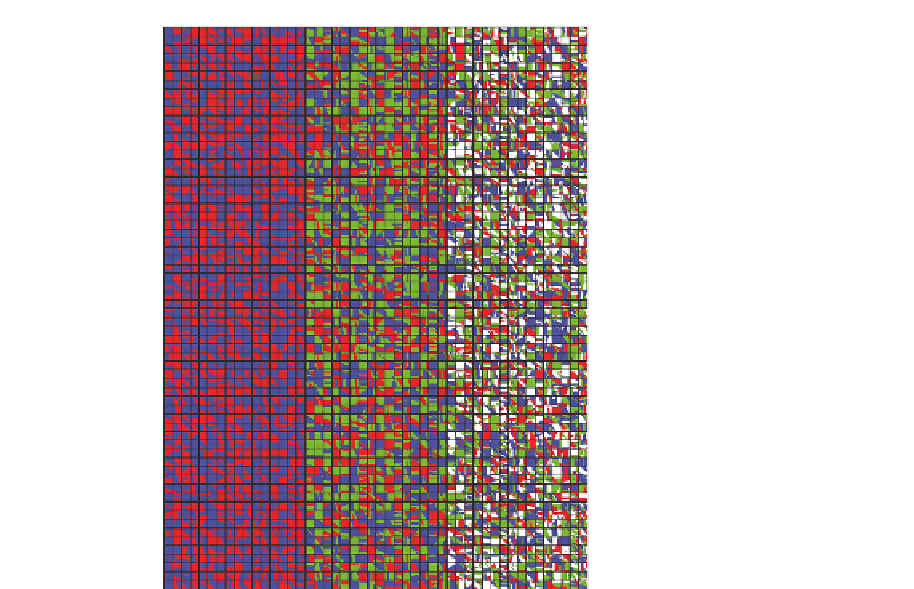Graphics Reference
In-Depth Information
Figure 6.1.
Different partition patterns.
During compression, the algorithm must select the correct distribution pattern
and boundary color pairs, then generate the quantized value for each pixel. There
is a certain degree of trial and error involved in the selection of patterns and
boundary colors, and when compressing, there is a trade-off between compression
time and final image quality. The higher the quality, the more alternatives the
algorithm will try before deciding which is best. However long the compression
takes, the decompression time is fixed, as the image data can always be re-
extrapolated from the pattern and boundary colors in a single pass.
The compression algorithm can also use different metrics to judge the quality
of different attempts, from pure value ratios of signal to noise, to a perceptual
judgement weighted toward human visual acuity. The algorithm can also judge
the channels individually rather than as a whole, to preserve detail for textures
where the individual channels may be used as a data source for a shader program,
or to reduce angular noise, which is important for tangent-space normal maps.
Overall, correct usage of these options can give a marked improvement over
existing compression algorithms, as shown in Figure 6.2.









